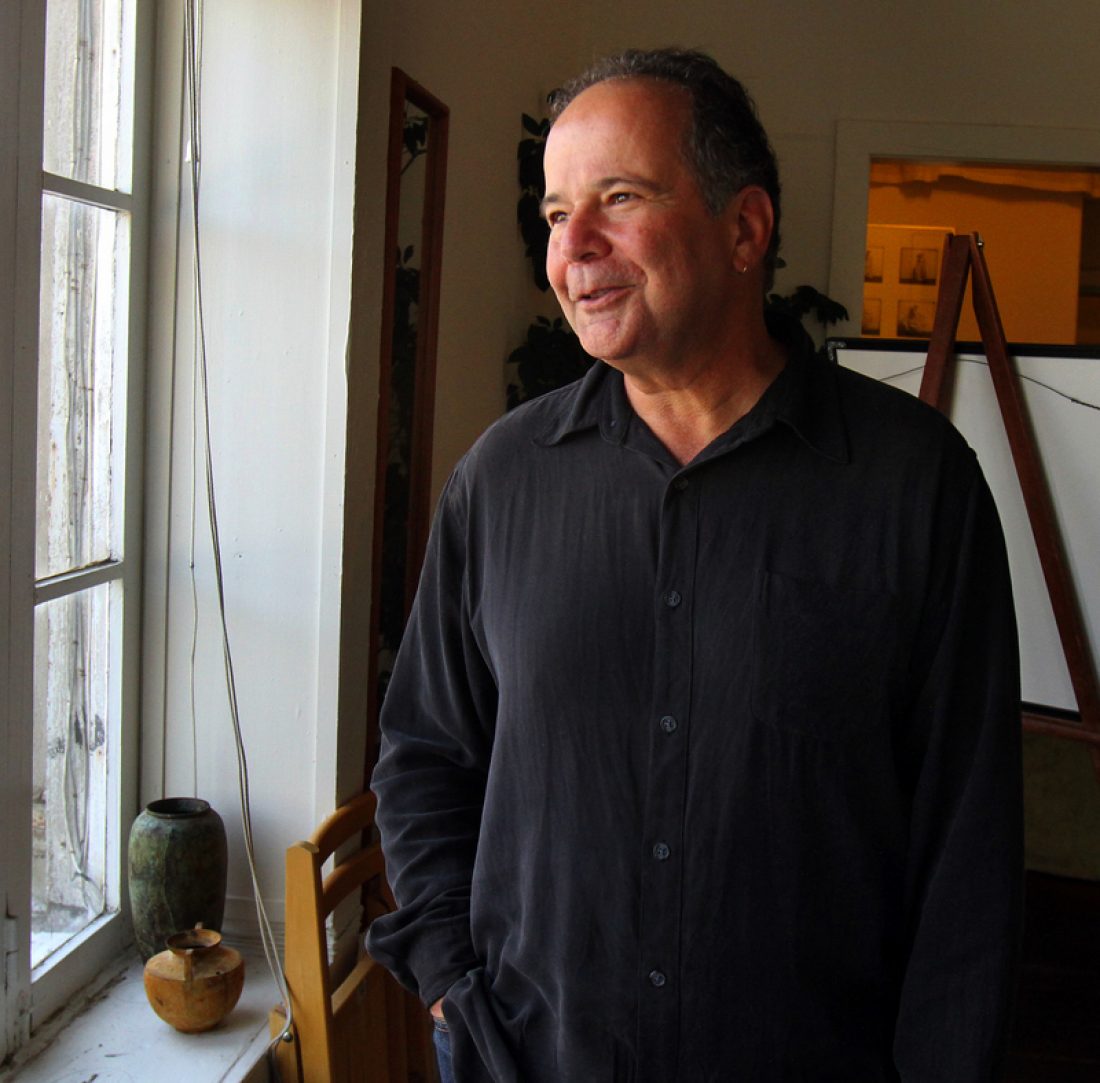By KATIE WATTS / Petaluma Towns Correspondent
He grew up in Rochester, N.Y., home of Kodak, but photographer Murray Rockowitz didn’t own a camera until after he graduated college and moved to the Golden State.
“When I left,” he says, “my dad offered me a Kodak 35 millimeter camera and suggested I might want to use it.”
And he has. Rockowitz, 60, has spent almost four decades behind the camera, capturing the world and the faces around him.
He moved to Mill Valley in the mid-1970s and was immediately “smitten” by his father’s present. “In hindsight,” he says, “I was always a visual person. Put a camera in my hands, and it was magic.”
Serendipitously, his landlords were amateur photographers who lent him equipment and taught him the basics. He improvised a darkroom. And they suggested he consider black and white, the medium he is now known for.
“I felt like a kid again, playing with my chemistry set. It was the first thing I was passionate about. I developed film every night, probably three to four rolls.”
During the day, he made a living managing the café at the Mill Valley Book Depot. And when he wasn’t taking photos, he was checking out photography books from the library.
In 1978 he met the woman he would marry, Laurie Cahoon. And 10 years later, when neither liked the way Marin was changing, they came north.
“Petaluma was more like upstate New York: old houses, dairy land, big trees,” he says. They also found it was a great place to raise their son, Jesse. “In our first month here, we met more people than we had known in the 12 years we lived in Mill Valley.”
Rockowitz’ most important job was printing for Point Reyes Station photographer Art Rogers. “It was a fabulous education on all kinds of levels. When I started, I was a good printer. When I left I was a great one.”
He also was studying with the man who became his mentor, the late photographer Morrie Camhi. “I was photographing rocks, nature, until I took his portrait class.”
In 1989, Rockowitz realized, “it was time to try making a living as a photographer. I called everyone I knew, told them I was in business.” He offered to take a photo at no charge, “and if they liked it, they could buy prints.”
He pauses. “And now I’m rich and famous.”
He laughs again and shakes his head.
Rockowitz may not be rich and famous, but he has made a living from photography, something people told him he couldn’t. He’s also well-known and respected within the community for making quality portraits that seem to capture the spirit as well as the face and for his dedication to the local arts scene.
Rockowitz is active with the Petaluma Arts Center and teaches classes, eager to pass on what he has learned.
Why black and white portraiture? Rockowitz speaks thoughtfully.
“Black and white becomes an immediate abstraction. A black and white portrait looks more real than a color print because there’s no distraction, no seduction from the color.
“It’s also more permanent. My silver gelatin prints will last three to four hundred years.”
“Color is intriguing to me,” he says, explaining how he desaturates the color, giving the photo a subtle, tinted appearance.
Rockowitz is not against digital, but to him, photography is about the process, “the darkroom alchemy, the magic of watching the prints come up in the tray, the satisfaction of working the prints. Each one is individual.”
And how does he capture the spirit behind the face, newborn to centenarian, finding beauty in each one and relieving the stress of having a portrait taken.
Rockowitz’ high-ceilinged studio, with gentle jazz playing, trailing greenery and a small fountain, is a peaceful place and his low-key manner puts sitters at ease.
He readily admits that a portraitist must also be an amateur psychologist.
“I’m interested in who you are, what you are. I have empathy and compassion, and I can relate to very different people on their level, from a place of integrity. Each sitting is different, and it requires patience, but inevitably each person opens up and blossoms.
“It’s like you’re in my living room and we’re having a visit. Out of that comes real people.”
Read more about the Readers Theatre event that will take place in Murray Roskowitz’ studio here.

